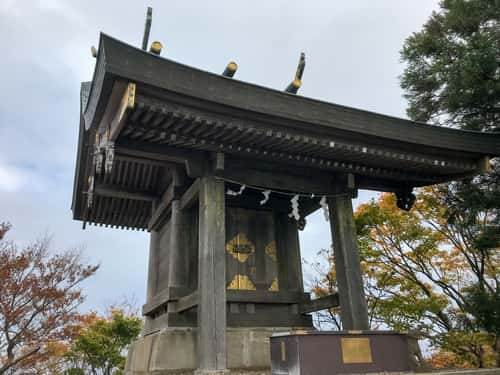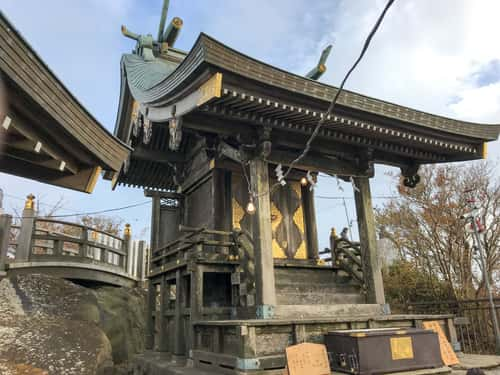目次
Mt. Tsukuba, one of the 100 most famous mountains in Japan
Mt. Tsukuba is 877 meters above sea level in the suburbs of Tsukuba City, Ibaraki Prefecture. Its summit is divided into Nantaisan and Nyotaisan, and is also known as the precincts of Mt. Tsukuba shrine. The summit of Mt. Tsukuba is surrounded by twin peaks and is also home to many megaliths and oddly shaped stones made of mottled rock, while many granite rocks can be seen on the hillside. The Mt. Tsukuba area was designated as the Mt. Tsukuba Regional Park in 2016.
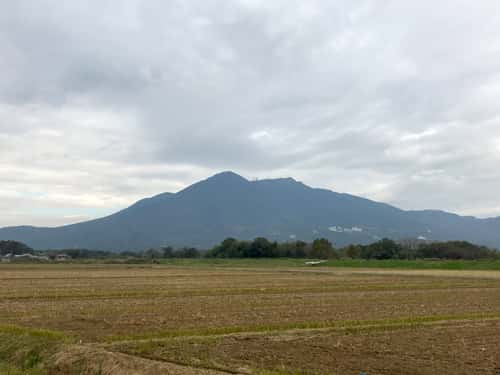
Panoramic view of Mt. TsukubaMt. Tsukuba has also been named as one of the 100 most famous mountains in Japan. Although its elevation is the lowest among the 100 most famous mountains in Japan, it is still a famous mountain that can be viewed from the Kanto Plain, and is also known by the name “Shiho” (purple peak) because the color of the mountain appears to change colors in the morning and evening. This is why the mountain has been called “Mt. Fuji in the west and Tsukuba in the east” because Mt. Fuji has been compared to Mt Tsukuba since ancient times. Mt. Tsukuba is where people have gathered for centuries to worship the gods by sometimes singing and dancing, and celebrating the bountiful harvest in large numbers. Thus, Mt. Tsukuba is a reizan worthy of being ranked among the 100 most famous mountains in Japan.
Mt. Tsukuba, loved by the common people
Located in the north of the vast Kanto Plain and northwest of Kasumigaura, the distance between Mount Tsukuba and Narita is a little over 50 km. Since there is only flat terrain from beyond Mt. Tsukuba can be clearly seen from all parts of the Kanto region on a clear day. There is a bicycle road named Tsukuba Kasumigaura Rinrin Road that utilizes the former approximately 180 km long Tsukuba Railway has recently been attracting much attention. The road is popular among families and young people, as it allows cyclists to ride from Tsuchiura Station to the outskirts of Mount Tsukuba over a distance of about 20 km while enjoying the view of Mount Tsukuba.
The vast panoramic view from atop of Mt. Tsukuba is just sensational. Mt. Fuji can be clearly seen from Mt. Tsukuba even though it’s about 150 km away. As chosen in “Night View Heritage of Japan”, people can enjoy the gorgeous Mt. Fuji at night and the night view of Kanto Plain. From the peak, one could viewMt Mihara of Oshima, Izu Islands, and Kobushigatake and Kinpusan to the west, Harunasan to the northwest, Nasudake to the north, and the sacred site of Kashima Shrine to the southwest.
Mt. Tsukuba is also famous for its beautiful trees and flowers. During spring, the Mt. Tsukuba Ume Matsuri is held and countless white and red plum trees bloom on the mountainside. In early summer, katakuri (dogtooth violets), known for their purple flowers, cover the area around the summit of the mountain, while hydrangeas and azaleas decorate the mountain with their gorgeous petal colors throughout the summer. In autumn, the area around Mt. Tsukuba is blessed with a blanket of red leaves.
Anyone can enjoy climbing Mt. Tsukuba
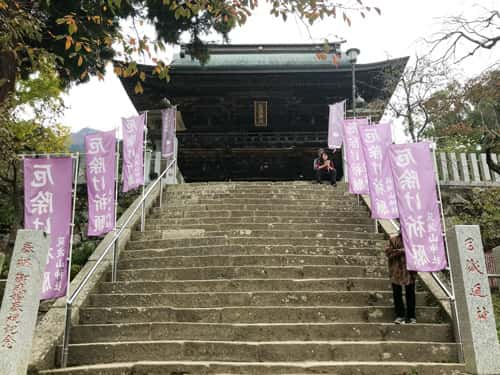
Stone steps on the temple grounds of Mt. TsukubaBoth Nantaisan and Nyotaisan have shrines at their summits with a 1634-meter-long cable car that runs from the shrine grounds to the top of the mountains at an elevation difference of approximately 500 meters. The last stop of the cable car is at the top of Nyotaisan (877 m above sea level), which is 6m higher than Nantaisan. There is also a ropeway that runs 1.3 km from the east side of the mountain where the elevation climbs up 300 m. Among the 100 most famous mountains in Japan, there is no other mountain that can be reached by both ropeway and cable car, and the low level difficulty makes it easier for anyone to visit the summit shrine, which is why this is a reason why Mt. Tsukuba is a popular mountain for tourists to visit.
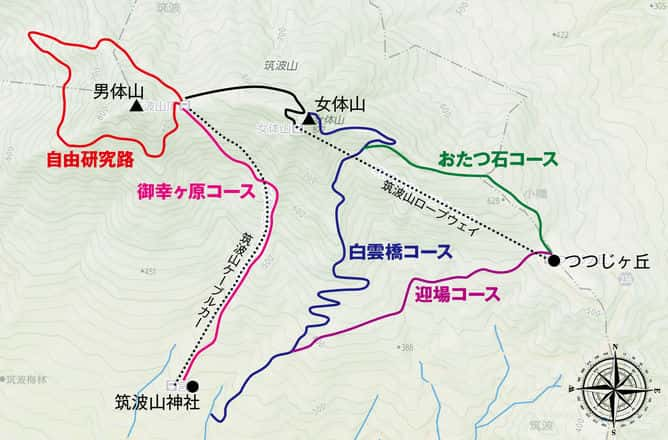
Mt. Tsukuba Climbing Course
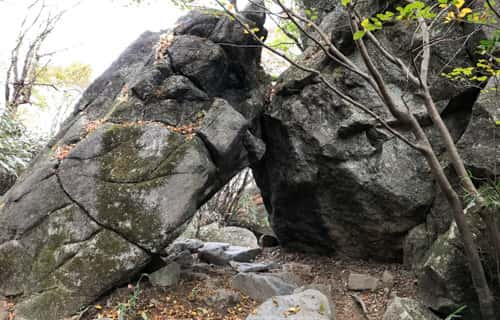
Tsukuba Hakuunbashi Course with its series of tremendous rocky terrainsSince Mt. Tsukuba can be reached by cable car or ropeway, there are various climbing courses that can be enjoyed by both beginners and advanced climbers. From Mt. Tsukuba Shrine, the Miyukigahara Course runs along the cable car that leads to Miyukigahara near the top of Mt. Tsukuba. Heading towards Nyotaisan is the “Hakuunbashi Course”. There is also the “Otatsuishi Course” that runs from the beginning of the ropeway in the eastern part of the mountain to the summit of Nyotaisan. There is also a short trail connecting close to Miyukigahara and Mt. Nantai and the summit of Mt. Nyotai. Furthermore, from Miyukigahara at Tsukuba Peak Station, there’s a maintained trail called the Shizenkenkyuro or “Nature Study Path” that circles around the summit of Mt. Tsukuba, and this trail is recommended for beginners in mountaineering.
Mt. Tsukuba is a “Rock Museum”
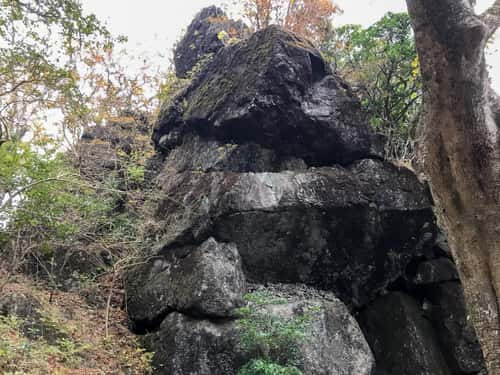
Mt. Tsukuba Risshinseki, loved by Shinran ShoninMt. Tsukuba is famous as a power spot. Not only is the entire mountain worshiped as a holy land of Mt. Tsukuba jinja, but there are holy rock formations all along the side of the mountain and traces of people’s worship of the gods from the distant past can still be seen today. The most notable is Risshinishi, located near the summit of Nyotaisan. It is located along the Shizen Kenkyuu Rou and is rarely visited because the entrance of the mountain path is difficult to find. However, this is the best power spot on Mt. Tsukuba. The name Risshinishi comes from the fact that this is where the famous monk Shinran chanted a Buddhist prayer and realized the salvation of starving ghosts, as well as where Mamiya Rinzo made a vow to defend his honor as a samurai. The rock’s magnificent shape is worthy of being called a rockery, and from its peak, one can see all the way to the west from Mt. Tsukuba. There is also a place along this nature trail named Ooishi Kasane. It is said that if you write your wish on a pebble purified at Mt. Tsukuba, it will come true.
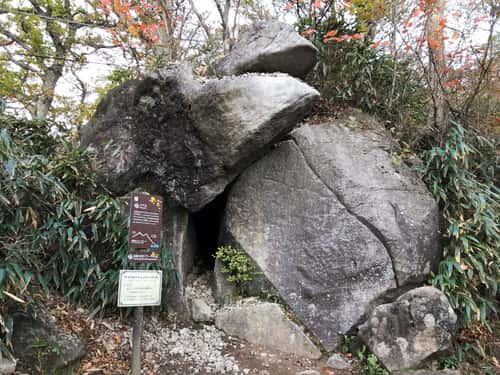
Throwing pebbles for good luck Mt. Tsukuba ToadstonesClose to Nantaisan, there is a “toad stone” on the mountain path connecting Nyotai and Miyukigahara. It is said that if you throw a pebble at the toad stone and it lands on the rock, you will be blessed with good fortune like money.
Coming down the top of Nyotaisan along the Hakuunbashi Course, there are many megaliths, many of which are revered by people as oddly shaped rocks or rock formations. The first megalith that climbers encounter is Daibutsu Iwa (Big Buddha Rock), which looks like a giant Buddha when viewed from the side. Next is “Byobu-Iwa,” which is enshrined at the Azatsune shrine, and “Hokuto Iwa,” (the North Star Rock) which rises to the heavens, are followed by a series of huge rocks called “Rimen Daikoku” (God of Daikoku’sBack), “Defune Irifune,” (Ship Departure and Arrival) and “Yinyouseki” (Yin and Yang Rock). There is also a rocky area with an empty space under a huge rock, which is named “Haha no Tainaikuguri” (Mother’s passage through the womb). In addition, there is a rocky place called “Takamaga-hara,” (High Plain of Heaven) where stone steps are found between giant stones, and there is a temple where people visit to pray. At the end of the series of giant stones, you will see the “Benkei Nana Modori,” (Return of the Benkei 7 times) where a giant stone is perched directly above the stones along the mountain path. Since this huge stone looked like it was about to fall, even Benkei of the distant past must have walked back and forth seven times.
It’s impossible not to be impressed by these magnificent rock formations. The power spots of rock formations will surely bring joy to anyone descending the mountain path. This is why Mt. Tsukuba is called the “Museum of Rocks”. Finally, returning to the temple grounds of Mt. Tsukuba shrine, there is a tree that is said to be 800 years old with a trunk circumference of 10 meters and a height of 32 meters. The tree is still cherished as the sacred tree of Mt. Tsukuba shrine.
The History and Importance of Mt. Tsukuba Jinja
Mt. Tsukuba Shrine is revered as the spirit of Mt. Tsukuba, and its history dates back to the time of the birth of the nation of Japan. The deities of Mt. Tsukuba Shrine are Izanagi-no-mikoto (male deity Izanagi) and Izanami-no-mikoto (female deity Izanami), the deities of national birth as described in the Chronicles of Japan and Kojiki. These two deities united to give birth to the gods, which led to the birth of Japan. Many people still visit the shrine to this day to receive divine blessings from this divine couple, which includes conjugal harmony, marriage, family safety, and the security of the nation. Among the annual events held in February at the shrine are the annual prayer ceremony, which comes from an agricultural culture centering on rice cultivation, prayers for national security, and a bountiful harvest. Furthermore, the Imperial Rei-den Ceremony, the Niinamesai Ceremony, and the Great Purification Ceremony have long been held at this shrine. The shrine is also visited by members of the Imperial Family, which shows that the mountain is deeply connected with the Imperial Family.
Mt. Tsukuba has long been spoken as one of the most sacred mountains in Japan, and is mentioned in Manyoshu, the Japanese anthology of poetry, as “the inheritance of man from the age of gods.” The fact that two deities, Izanagi-no-mikoto and Izanami-no-mikoto, have been enshrined as the deities of the mountain since ancient times is probably due to their involvement in the founding of Tsukuba Shrine.
According to the history of the shrine, during the period of the birth of the nation, when Oyashimaguni (Honshu) was discovered, the two deities created Mt. Tsukuba in the sea which was in the spiritual realm of the east. In other words, they sailed around the islands and looked at the mountains from the seashore, Mt Tsukuba stood out to them, and they designated it as their ancient spiritual base. Since the summit of the mountain was divided into two, two deities, a male and female, were worshiped at the main shrines of the male and female bodies of the mountain, respectively, and a hall of worship was built at the foot of the mountain. Thus, the two founder deities, Izanagi and Izanami, became the deities of Mt. Tsukuba.
Since Ancient Times, Songs Have Been Written about the Holy Mountain
Mt. Tsukuba has been an important place since long ago, and many imperial and powerful families who have left their mark on history have paid their respects to the gods of their predecessors. Both the male and female shrines of Mt. Tsukuba have been places of worship since the reign of Emperor Jinmu. Thereafter, just before the Motoise Imperial Tour began in the 1st century B.C., the Mononobe clan, who had a great influence on ancient Japanese religion, realized the importance of Mt. Tsukuba, so they established the shrine and protected it. According to the history of the shrine, during the reign of the 10th Emperor Sojin, Tsukuba-no-Mikoto of the Mononobe clan became Tsukuba Kunino-miyatsuko regional administrator. From then until the Taika Reformation, the Tsukuba clan was in charge of the administration of Mt. Tsukuba.
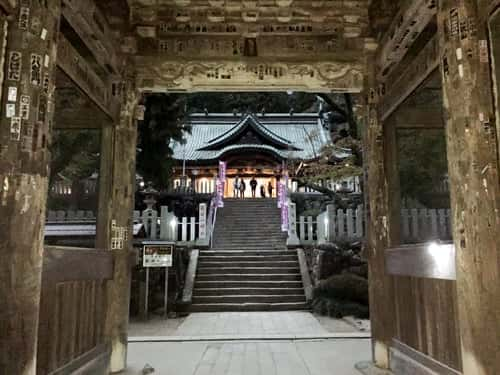
The main foot path to Mt. Tsukuba JinjaIn those days, the internal politics of Japan was in disarray, and there were constant rumors of invasion from overseas, making it imperative to protect the sacred treasures from foreign enemies. During the reign of the 12th Emperor Keikou, the warrior Yamatotakeru no Mikoto was entrusted with the sacred treasures from Princess Yamatohime no Mikoto. The earliest historical records Kojiki stated that he stopped at Mt. Tsukuba on his way to conquer the East. The fact that he visited Mt. Tsukuba must have indicated that Mt. Tsukuba was of some importance to him. On his way back from the expedition, Yamatotakeru no Mikoto composed a poem that said, “After passing Nihibari Tsukuba, I will sleep for a few nights,” to which the man who lit the torch responded with a poem that became the origin of the famous renga (linked verse), “Tsukuba Road.”
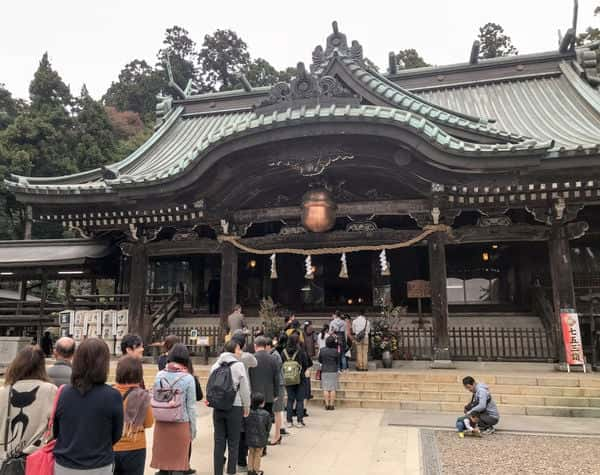
Tsukuba Shrine attracts a large number of worshippersIn addition, the Hitachinokuni Fudoki describes stories related to the God of Tsukuba and the god of ancestors, as well as the many people who visited the God. Eventually, people were composing songs about Mt. Tsukuba. These poems became known as famous poems in the Manyoshu (Anthology of Myriad Leaves) and Kokin Wakashu (Anthology of Ancient and Modern Japanese Poetry). During the Nara period (710-794), the book Manyoshu (Anthology of Myriad Leaves) included 25 poems about Mt.Tsukuba, and the mountain became well known as a sacred mountain in Hitachinokuni Province. During the reign of Emperor Godaigo, the poem “Sazareishi ni Tatohe Tsukubasan ni Kakete” was written in Kokin Waka Shu (Anthology of Ancient and Modern Japanese Poetry), allows Japanese to reminisce that Mt. Tsukuba has been known as a sacred mountain that symbolizes the honor of the imperial family since ancient times.

